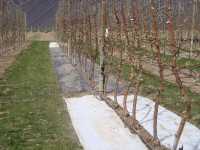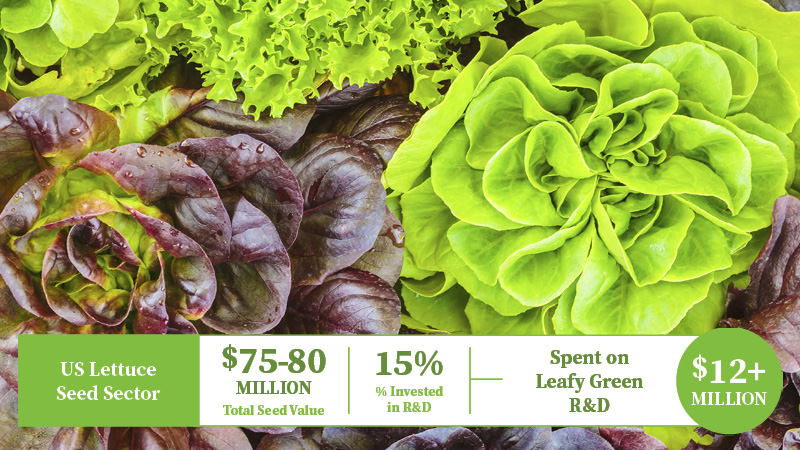Get Educated On Other Options To Treat Fire Blight In Organic Apples And Pears

By Oct. 21, 2014, organic apple and pear growers will lose two important tools used to combat fire blight, when both oxytetracycline and streptomycin use will be phased out. In April, the National Organic Standards Board failed to approve a petition to extend the expiration date for oxytetracycline for two more years beyond the current date to allow for the completion of current research on non-antibiotic control.
Research on biological control of fire blight has gone on for many years, but until recently the results did not stack up to the effectiveness of antibiotics. A USDA-funded project specifically on non-antibiotic control for organic apples and pears started in 2012 in Oregon, Washington, and California. Final results are expected around 2016. Also, new products are becoming available at the same time, and researchers, growers, and field consultants need several years to see how they work in a commercial setting and how they fit into an overall management program.
American Fruit Grower talked to two people on the front lines of this issue, David Granatstein, sustainable agriculture specialist with Washington State University Extension in Wenatchee, WA, and Matthew Grieshop, assistant professor Organic Pest Management, Michigan State University.
Q: Biocontrols are an option for growers, however the success of them has been varied. Why?
Granatstein: “Partly, it was not knowing how to properly use them. There’s been more research on the biology of the fire blight disease, and how some of these organisms actually work inside the flower. ‘Product A’ may be effective at one stage, but not at the second. But people were just using it as a stand-alone solution and it wasn’t doing the job. So integrating several products looks more promising. And timing will be more critical, as it may take a number of days for the product to colonize the blossom and thus would have to be applied before there is any fire blight risk indicated by the disease model. Also, these products generally target the blossom and may not be effective for shoot blight or mid-summer infection caused by hail or storms.”
Grieshop: “The biologicals (Bloomtime, Blight Ban and Blossom Protect) have had a mixed history of success depending on region and variety. One of the biggest challenges for the biologicals will be integrating them into primary scab management programs. For example: Blossom Protect is a yeast that occupies space on apple blossoms — preventing colonization by fire blight bacteria.”
Q: How effective are these new options?
Granatstein: “Ken Johnson (professor of plant Pathology at Oregon State University) has at least three years of trials with Blossom Protect, combining it with various other materials. When used after a lime sulfur and fish oil thinning spray on apples, his results have been pretty much equal to streptomycin, which is a real breakthrough. If he’s able to achieve that similar level of control, three years in a row, that’s a really good sign. The next step is seeing how this works at commercial scale. How sensitive will it be to handling in the field? Will there be an adequate supply? There are a lot of little details in terms of having this work on a commercial scale that really have not been put to the test yet. That’s one of the things we hope that people will be doing in the next two years while they still can use antibiotics, begin using these other treatments, get used to them, identify where there are some problems, but still having the fallback if there’s a big infection.”
Grieshop: “Most of the positive results in scientific trials testing the biologicals have come from the North Western fruit growing regions, likely because they are less humid than the Eastern fruit growing climates. Currently there is a large scale organic fire blight project being run in the Northwestern region by Ken Johnson. George Sundin has run some small trials testing biological products under Michigan conditions, but they have not been very promising. We (Michigan State University) are hoping to do more research on organic alternatives in the near future; the lack of a 2012 farm bill has made funding this very difficult though.”
Q: How has copper, another alternative to antibiotics, performed?
Granatstein: “Copper has been essential for pre-bloom sanitation. For most varieties, using it during bloom, there has been a high risk of ‘marking’ the fruit and greatly reducing its marketability. Other regions have relied more heavily on copper and have sometimes seen copper build up in the soil to levels where it is a problem. There are new copper materials becoming available with a much lower level of metal content, potentially solving both of these problems. They will need to be tested on different varieties, under different weather conditions, in different regions to see how they work and how they can integrate with other pest control needs during the same period as fire blight. Copper is much like an antibiotic in that it quickly kills the fire blight bacteria. So it would fit better in terms of being able to monitor the fire blight disease model and then treat with it when high risk is indicated. So, it’s hard to say whether in the long run people will end up (using) more of the copper than the blossom protect.”
Grieshop: “Copper has a long history of use for fire blight control. Spraying a bunch of sulfur and copper based fungicides on top of a fungally-based biological control agent may make it much less effective. As, David mentioned, copper applications on developing buds and flowers can lead to russetting and high levels of copper in soils are toxic to earthworms and other soil biology. The new ultra low rate copper and soap products may provide control at a lower rate of copper which could help with these two problems. However these new products have not been thoroughly researched.”
Q: What about the methods that American apple growers have used when they export their products to Europe?
Granatstein: “In Washington State, there have been a number of growers in the EU certification program, which prohibits antibiotic use for three years. They did a lot of field testing, trial and error, blending existing knowledge with new products and best guesses. Harold Ostenson (organic program manager at Stemilt Growers) played a key role in working with the growers, and he is going to summarize this experience in a publication for growers that the Organic Trade Association just agreed to support. The growers produced a mix of susceptible (e.g. ‘Gala’) and more tolerant (e.g. ‘Red Delicious’) varieties. In addition to good sanitation, vigor control, and similar practices, it may be that the growers identified sites that were less prone to the disease. If a grower was in the EU program, not using antibiotics, and had a very bad infection year, or they felt they just weren’t comfortable going with their current system, they could spray an antibiotic. They would lose their EU status, but they wouldn’t lose their organic status. So, their food would be sold organic here in the U.S. That penalty was not that big of a deal because the EU market is relatively small anyway. But, now if you’re in that situation, and you spray an antibiotic, once the phase-out occurs, you lose your organic status altogether. That’s obviously a much bigger economic impact on the grower. But, we still think there’s something to learn from what the EU folks have done.”
Grieshop: “Based on what I’ve read, they rely on resistant varieties, copper — where it is allowed, pruning, and biologicals. I believe the mainstay of their programs rest on the use of less susceptible varieties such as Topaz.”
Q: How will the loss of these antibiotics affect the organic market?
Granatstein: “That’s going to be the big question: how much risk are growers willing to take? It will depend on the age of their trees, on the variety of the trees they have as to how much risk they’re willing to take. They may be willing to try a year with no antibiotics, even if (the trees are) at high risk of fire blight, if they’re older Red Delicious or something, because they feel the disease won’t go very far on the tree. And yes, they’ll have to spend some extra money pruning out the infected wood, but they can recover from that. But if it was a young block of Pink Ladies, that’s a totally different story. So I think it will be quite variety, block, location specific as to whether people say they’re comfortable with the new materials or not. The results from Ken Johnson are promising, but control will almost certainly cost more than now. Thus the price premium for organic may affect grower decisions as well. The consensus is that pears will be a bigger challenge than apples.”
Grieshop: “We won’t know until we have an epidemic year and that will vary by region. If the big organic growers out west pull out from organic production, we might see a tightening of national supply of organic apples — at major grocery outlets and for processors. This may create new opportunities for smaller operations that focus on local sales. It may also change the varieties of organic apples that are widely available. Heavily-susceptible varieties such as Fuji, Gala, Braeburn, Granny Smith, etc., may become harder to come by. Fire blight tolerant varieties such as Enterprise, Liberty, and Topaz may become more common. It will be interesting to see how the organic consumer responds to this, especially since the loss of antibiotics rests neatly at their feet. I think that the loss of antibiotics is going to be really tough on middle-scale organic growers (40-200 acres) in the Eastern U.S., especially if they depend on blight susceptible varieties.”
Q: What can and should growers be doing during to prepare for the loss of oxytetracycline and streptomycin?
Granatstein: “People need a few years of actually proving to themselves that the new materials are indeed as effective and figuring out how to use them. There’s going to be timing issues involved. People will need to be convinced if they’re going to risk a $10-20,000 investment in an orchard that these new materials, these new protocols are going to actually work. And that takes time … You’ve got to have materials, have the information about using them, and then you need a fire blight year, which we don’t get every year. Growers should attend winter meetings where this topic is being discussed. And watch the excellent webinar that Ken Johnson and others gave (found at http://bit.ly/13txv0W).”
Grieshop: “Growers should be exploring/experimenting with copper and biologicals and think about what varieties they want to keep growing organically. Varieties or rootstocks that are susceptible should be avoided.”










